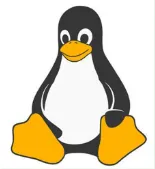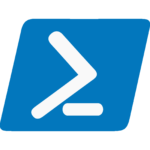The history of Linux is intricately tied to the history of UNIX, an operating system that pioneered many of the foundational concepts in computing. To fully understand Linux and its role today, we must explore its origins, beginning with the development of UNIX in the 1960s. Over the years, Linux has grown into a powerful and flexible operating system used in everything from personal computers to mobile devices and supercomputers. Let’s dive deeper into this fascinating journey.

The Origins of UNIX: The Precursor to Linux
The development of UNIX began in the 1960s when Bell Laboratories, in collaboration with MIT and General Electric, embarked on a project to develop a new operating system called Multics. The aim was to create a multi-user, multi-processing system with advanced features such as a hierarchical file system. However, by 1969, AT&T grew dissatisfied with the progress and withdrew from the project. Despite this, several Bell Labs engineers, including Ken Thompson, Dennis Ritchie, and others, continued their work independently, resulting in the birth of UNIX.
Thompson and Ritchie designed the first version of UNIX on a PDP-7 computer. Brian Kernighan coined the name UNIX as a pun on Multics, highlighting its simpler, more streamlined design. By 1971, developers had UNIX running on the PDP-11 with just 16K of memory and a 512K disk. Bell Labs’ patent department initially used it as a text processing tool.
One of the key factors behind UNIX’s success was its simplicity and flexibility. It was designed with a programmer’s environment in mind, featuring:
- A hierarchical file system
- Multi-user and multi-processing capabilities
- A simple user interface and utilities that could be combined to perform complex tasks
- A transparent interface to devices and hardware
By 1973, UNIX had been re-written primarily in the C programming language, a significant development that made it much easier to port UNIX to other machines. This move toward portability helped UNIX spread rapidly in academic and research settings.
The GNU Project: The Foundation for Free Software
Richard Stallman started the GNU Project in 1983, laying the groundwork for the Linux ecosystem that would eventually emerge. Stallman had a revolutionary idea: he wanted to develop a free, UNIX-like operating system that anyone could use, modify, and share without being subject to the limitations of proprietary software licenses. This marked the beginning of the free software movement.
The GNU Project’s goal was to develop all the necessary components of a fully functional operating system, minus the kernel. Key to this endeavor was the development of critical tools like the GNU Compiler Collection (GCC), the Bash shell, and many other utilities that would become standard in UNIX-like operating systems. However, despite the success in creating these components, the project lacked a kernel, the core program that interacts with the hardware and manages resources.
This gap in the GNU Project persisted until the arrival of Linus Torvalds’ Linux kernel in 1991, which would soon be combined with GNU tools to form a complete operating system. This blend of the GNU userland and the Linux kernel became the backbone of what is commonly referred to as Linux today, although some advocate that it should be called GNU/Linux in recognition of GNU’s major contributions.
Thus, the GNU Project not only provided the essential tools required for a free operating system but also ignited the broader free software movement, which continues to advocate for user freedom in software development and distribution.
The Birth of Linux: Linus Torvalds and the Kernel
The history of Linux truly begins in 1991 with a young Finnish computer science student named Linus Torvalds. While studying at the University of Helsinki, Torvalds wanted to create a free alternative to MINIX, a UNIX-like operating system used in academic settings. He found MINIX limited and thus began developing his own kernel. This kernel would later become the foundation of Linux.
The First Linux Announcement
On August 25, 1991, Torvalds made his project public by announcing it in a post on the MINIX newsgroup. He wrote:
“I am doing a free operating system (just a hobby, won’t be big and professional like GNU)…”
Early Versions of Linux
The first versions of Linux were basic. Version 0.01 was released in September 1991 but was not yet fully functional. However, by Version 0.02, the system was working. It still needed utilities from the GNU Project to be a complete operating system. Once combined with these GNU tools, the Linux kernel enabled the creation of a fully operational UNIX-like system that was completely free.
Linux Goes Open Source
From these humble beginnings, the Linux kernel began to evolve rapidly. A critical moment came when Torvalds decided to release Linux under the GNU General Public License (GPL). This decision allowed developers worldwide to contribute to the project. The open-source development model facilitated the collaboration of thousands of developers, which helped Linux grow quickly, enhancing both its stability and capabilities.
Version 1.0 and Beyond
By 1994, Linux had reached Version 1.0, which contained 176,000 lines of code. This milestone attracted significant attention from both hobbyists and commercial organizations. The collaborative nature of Linux development has remained one of its defining features, making Linux a dynamic and constantly evolving operating system.
The Rise of Linux Distributions and Enterprise Adoption
As Linux matured, one of the key challenges it faced was accessibility. In its early days, installing and configuring Linux was complex and time-consuming. It required significant technical expertise, limiting its user base. To overcome this challenge, developers began creating Linux distributions, or distros. These distros packaged the Linux kernel with essential software and tools, forming a cohesive and user-friendly system.
Early Linux Distributions
The first popular distribution, Slackware, was released in 1993. It was soon followed by Debian, which launched in 1994. These early distributions provided a pre-packaged Linux experience that simplified the installation and setup process. In addition, they introduced package management systems. This new feature allowed users to install and update software more easily, improving usability and accessibility.
Commercial Interest and Enterprise Adoption
As Linux distributions proliferated, the operating system began attracting attention from commercial entities. Companies like Red Hat and SUSE recognized Linux’s potential in the enterprise market. They began offering commercial Linux distributions that came with professional support and services. One of the most successful of these was Red Hat Enterprise Linux (RHEL), introduced in 2000. RHEL provided businesses with a stable and secure operating system that came with long-term support, making it a viable option for enterprise-level infrastructure.
Linux as a Cost-Effective Solution
The adoption of Linux by enterprises marked a significant turning point. As businesses searched for alternatives to costly proprietary systems, Linux emerged as a cost-effective and reliable solution. It became widely adopted for servers, data centers, and cloud infrastructure. This growing interest fueled Linux’s rise as the dominant operating system for server environments, setting the stage for its future dominance in the IT infrastructure space.
Linux Expansion into Servers, Supercomputers, and Mobile Devices
As the history of Linux continued to evolve, its flexibility allowed it to spread into new domains beyond traditional desktop and server environments. One of the earliest and most significant areas where Linux gained traction was in supercomputing. Due to its scalability, stability, and capacity for customization to meet particular performance requirements, Linux had gained popularity among the top supercomputers by the early 2000s. Over 90% of supercomputers in use today, including those at research institutions like NASA and CERN, run Linux.
In parallel, Linux made significant strides in the embedded systems market, powering devices such as routers, medical devices, and automotive systems. Its lightweight nature, combined with its open-source license, made Linux the ideal choice for resource-constrained devices where customization and efficiency were critical.
With the release of Android, a Google-created mobile operating system that is based on the Linux kernel, Linux may have experienced its most significant growth. Android quickly became the dominant mobile platform, powering billions of devices worldwide. This success thrust Linux into the hands of everyday users, further solidifying its position as a global operating system.
The Present and Future of Linux
As of today, Linux is omnipresent in the tech world. It powers a broad spectrum of devices and services, from personal computers to cloud platforms, mainframes, and supercomputers. Over the past decade, the growth of cloud computing has only amplified Linux’s dominance, with major cloud providers like Amazon Web Services (AWS), Microsoft Azure, and Google Cloud running primarily on Linux-based systems.
Additionally, Linux has become the foundation for emerging technologies such as containerization and microservices. The development of tools like Docker and Kubernetes, which are designed to run on Linux, has revolutionized the way software is deployed and managed, especially in DevOps environments.
Looking ahead, the future of Linux is bright. As open-source technology continues to influence the tech landscape, Linux will remain a key player in shaping the future of computing. With its ongoing development driven by a global community of contributors, Linux’s flexibility and robustness ensure that it will continue to be used in everything from traditional servers to cutting-edge fields such as artificial intelligence and edge computing.
Conclusion
The journey of Linux from its origins in UNIX to its present-day dominance is a testament to the power of collaboration and open-source development. Over the past few decades, Linux has transformed from a hobby project into a global force in computing, powering the infrastructure of the digital world. With its strong community, enterprise adoption, and influence in emerging technologies, Linux is set to remain a cornerstone of the computing world for years to come.
External Resources
For more information on the history of Linux and its ongoing impact, check out the following resources:
- The Linux Foundation: The official site of the Linux Foundation, offering insights into Linux’s role in modern infrastructure.
- The History of GNU: Learn about the origins of the GNU Project and its influence on free software.
- Linux Kernel History: Explore the official documentation and history of the Linux kernel.
- UNIX History: A comprehensive resource on the origins of UNIX and its impact on Linux.
- Android Open Source Project: Learn more about Android’s connection to the Linux kernel and its role in mobile computing.



